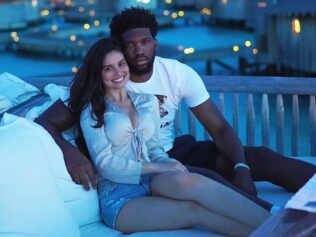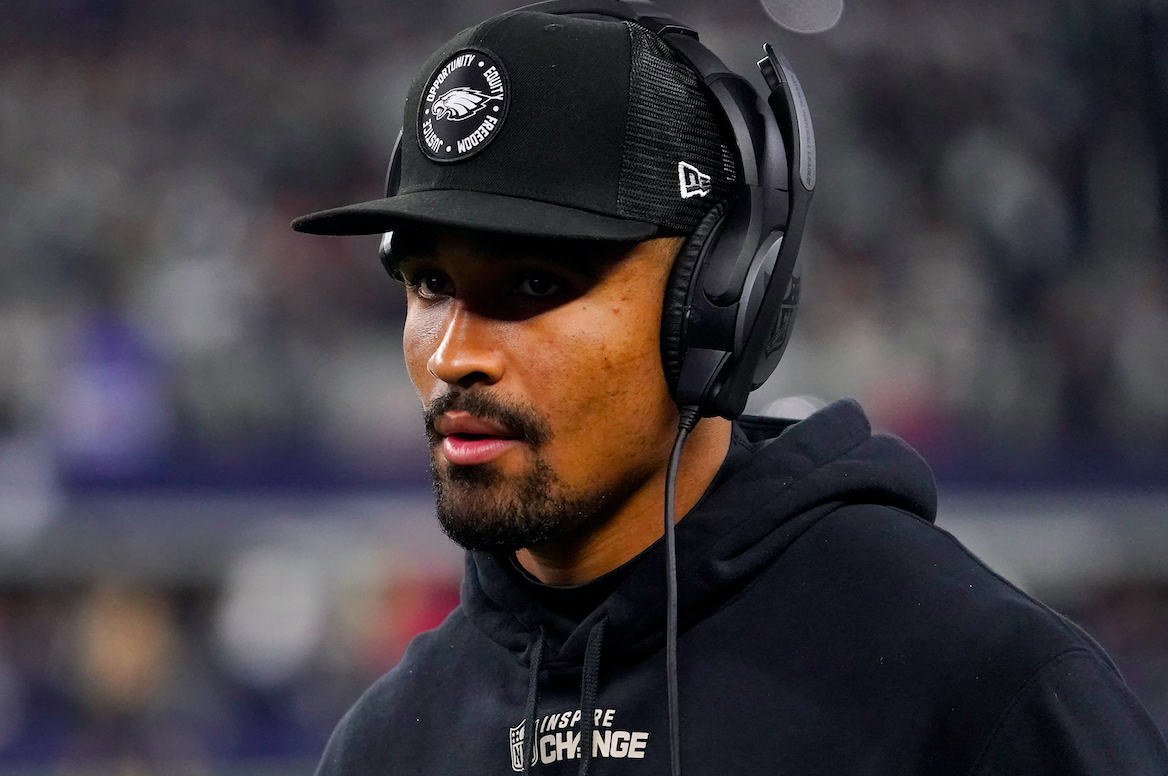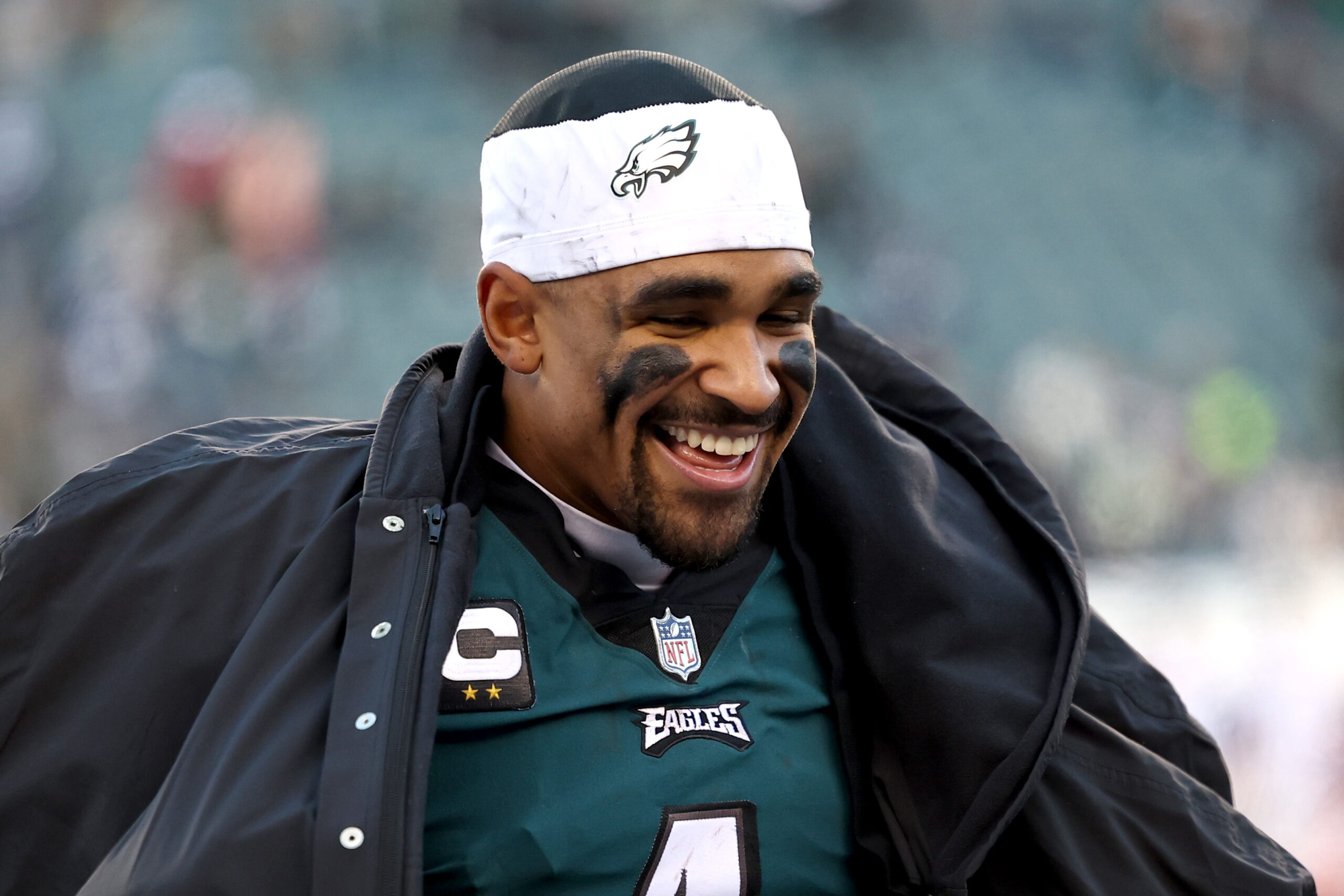My grandmother’s sister, when she moved up north from North Carolina, settled in Philadelphia. As a young child, I remember traveling from New York to go visit my family there, and can recall distinct memories of eating stacks of syrup-drenched pancakes in Aunt Oggie’s rowhouse kitchen or chasing after my older teenage cousins, who seemed like the coolest dudes in their world with their Philly swag, as the Market-Frankford Line rumbled and stumbled across the elevated train tracks on 52nd and Market Streets.
My impression back then was that Philly was an entirely Black city.
Black History in Philly? We Got You.
Tarik “Black Thought” Trotter of Grammy award-winning hip-hop band The Roots and lifestyle editor Cory Townes check out the iconic Mother Bethel A.M.E. Church in Philadelphia’s Historic District and visit a stop on the Underground Railroad in Germantown.
I don’t remember seeing any white people in the neighborhoods that I visited.
I’d come to learn later, when attending college in the City of Brotherly Love, that the Germantown neighborhood and parts of North, South, West and Southwest Philadelphia had one of the densest and largest African-American populations in America, alongside Detroit, the South Side of Chicago and my pre-gentrified hometown of Bedford-Stuyvesant in Brooklyn.
To my young eyes and ears, the city, though my family resided in the poorest sections, was a mecca. That Philadelphia Soul, through the creative genius of record producers Leon Huff and Kenny Gamble, was a major part of the soundtrack of my youth. The impenetrable Soul Train theme song, the de facto anthem for modern Black America, was MFSB’s “The Sound of Philadelphia.”
TSOP The Sound Of Philadelphia MFSB featuring The Three Degrees 1974
TSOP The Sound Of Philadelphia MFSB featuring The Three Degrees 1974
The city’s musical flavor emanating from the considerable vaults of Gamble and Huff’s Philadelphia International Records label, with supreme cuts from Harold Melvin & The Blue Notes, McFadden & Whitehead, The O’Jays, Billy Paul, The Three Degrees and Lou Rawls, among others, spoke to Philly’s unique sensibilities and soulful essence in a similar way that Motown’s contributions to the soul and R&B landscape introduced the world to that Detroit flavor.
In those early days for me, Philly’s personality and its latent strength, grit and toughness was captured within the sphere of sports by Smokin’ Joe Frazier, the former Olympic Gold Medalist and undisputed heavyweight boxing champion of the world from 1970 to 1973.
Joe Frazier Greatest Knockouts
Joe Frazier’s Greatest Knockouts. This day in boxing January 12, 1944 Joe Frazier born
Frazier intimidated others with his exceptional punching power, which formed a devastating tandem alongside his style of applying relentless pressure.
It wasn’t until Rocky hit the big screen that I came to the realization that white folks lived in Philly too.
I say all that to say that, as a sports junkie for as long as I can remember, I’ve long had an affinity for the city’s greatest African-American athletes.
As far as the Eagles go, the first player that captured my imagination was the incomparable Harold Carmichael, the 6-foot-8 wide receiver out of Southern University who was among the NFL’ s best players in the 1970’s.
Harold Carmichael
Uploaded by Philly.com on 2017-04-25.
Although they’re not my team, I find myself rooting for the Eagles occasionally. That will definitely be the case this Sunday when they take on the heavily-favored New England Patriots in Super Bowl LII.
To see them back on the NFL’s biggest stage conjures up fond memories for me, both as a child, a college student and beyond, marveling at the brilliance of former franchise legends like the aforementioned Carmichael, Randall Cunningham, Reggie White, Jerome Brown, Mike Quick, Eric Allen, Seth Joyner, Wilbert Montgomery, Clyde Simmons, Herm Edwards, Andre Waters, Keith Byars, Ricky Waters and a host of others.
Even though I’m a Rocky Balboa fan and now aware that the population is pretty evenly split, with African-Americans and whites each comprising approximately 44% of the city’s racial makeup, with a healthy dose of Puerto Ricans tossed on, those early life experiences won’t allow me to see Philadelphia as anything but the Black city I once thought it was.
And on Sunday, I’ll be thinking about all those great Eagles of years past that I rooted for, hoping this year’s team can put some more shine on all of those that preceded them.



